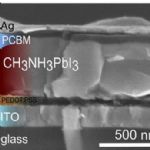Radiation Hardness of the Triple-Cation Perovskite
CHEETAH EERA-PV WEBINAR
Lecture offered on site @ ENEA Portici and interactively on-line to any interested registered participant
| 27th November 2018 11:00 –12:00 CET |
Organic-inorganic perovskites, such as methylammonium lead iodide (CH3NH3PbI3), are direct semiconductors that have recently proven to be ideal for numerous optoelectronic applications ranging from light emitting diodes and lasers to photodetectors, and solar cells. Lately, compositional engineering of the underlying AMX3 structure has been used to minimize non-radiative losses and maximize power conversion efficiency. Today’s best performing perovskite solar cells make use of a mixture of cesium (Cs+), methylammonium (CH3NH3+, MA) and formamidinium (HC(NH2)2+, FA) cations. At the same time compositional engineering can be employed to tune the optical band gap between 1.5 eV and 1.9 eV. Consequently, perovskites are a good choice for multi-junction solar-cells with ultrahigh efficiency. Moreover, perovskite based multi-junction solar cells, would be highly attractive for space applications since they can be lightweight, flexible, and highly efficient. In-situ measurements demonstrate that solar cells made from Cs0.05MA0.17FAz0.83Pb(I0.83Br0.17)3 are radiation hard and possess negligible degradation under high-energy, high-dose proton irradiation. Analyzing the radiation induced current during irradiation with 68 MeV and 20 MeV protons we found that the Triple-Cation Perovskite even exceeds the radiation hardness of SiC. Our optimized Cs0.05MA0.17FAz0.83Pb(I0.83Br0.17)3 based space solar cells reach efficiencies of 19 % under simulated AM0 illumination and maintain 95 % of their initial efficiency even after irradiation with protons at an energy 68 MeV and a total dose of 1012 p/cm2. Interestingly, we observe a significant slower decay of the open circuit voltage and photoluminescence intensity after proton irradiation. This behavior suggests a complex interplay of the radiation induced defect formation and passivation.
Informations
Contacts to get more information about this event:
| Dr. | Paola Delli Veneri | ENEA | |
| Dr. | Franco Roca | ENEA |
Technical information to register/login
| CHEETAH Webinar team |
Agenda
| Time | Title | Speakers |
|---|---|---|
| 11:30 - 12:15 | Radiation Hardness of the Triple-Cation Perovskite Cs0.05MA0.17FA0.83Pb(I0.83Br0.17)3 |
 LANG Felix
LANG Felix
|
| 11:45 - 12:00 | Questions & comments | |









